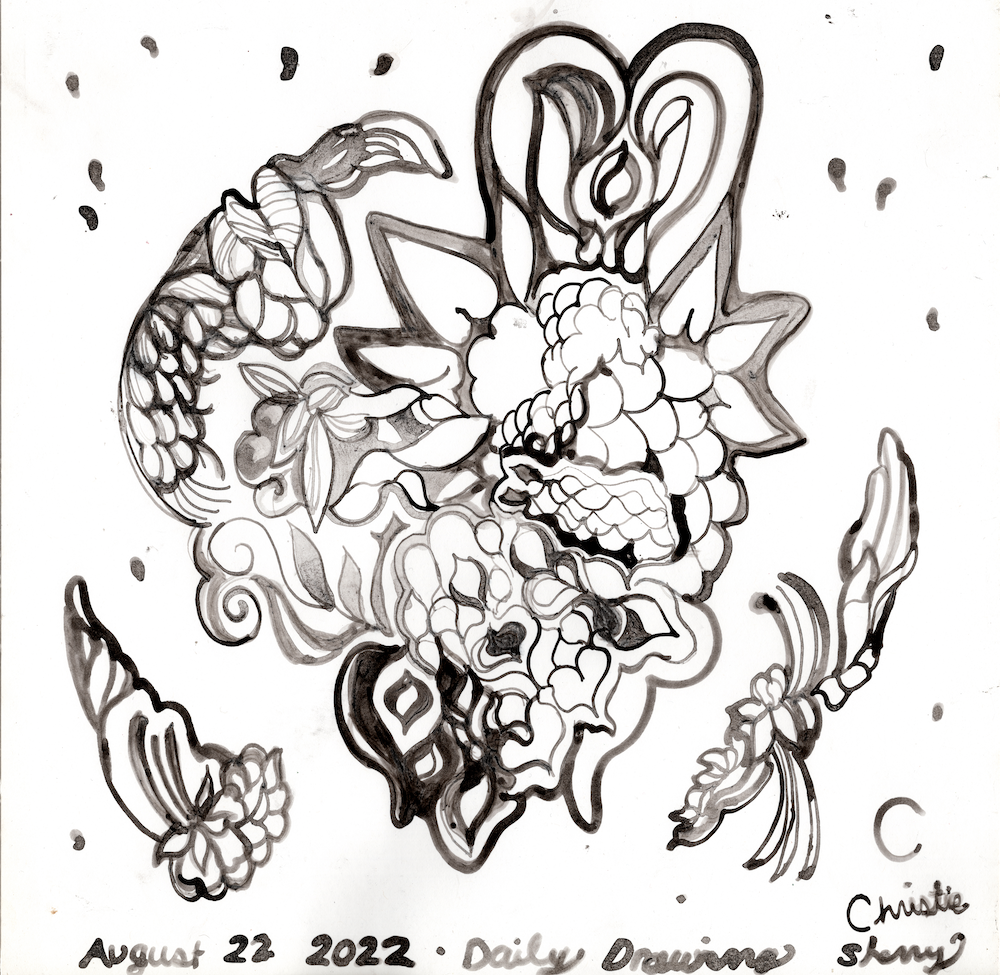

James Bowman, Counter-Tenor in his role as Oberon in the 1967 production by Benjamin Britten of of A Midsummer Night’s Dream.
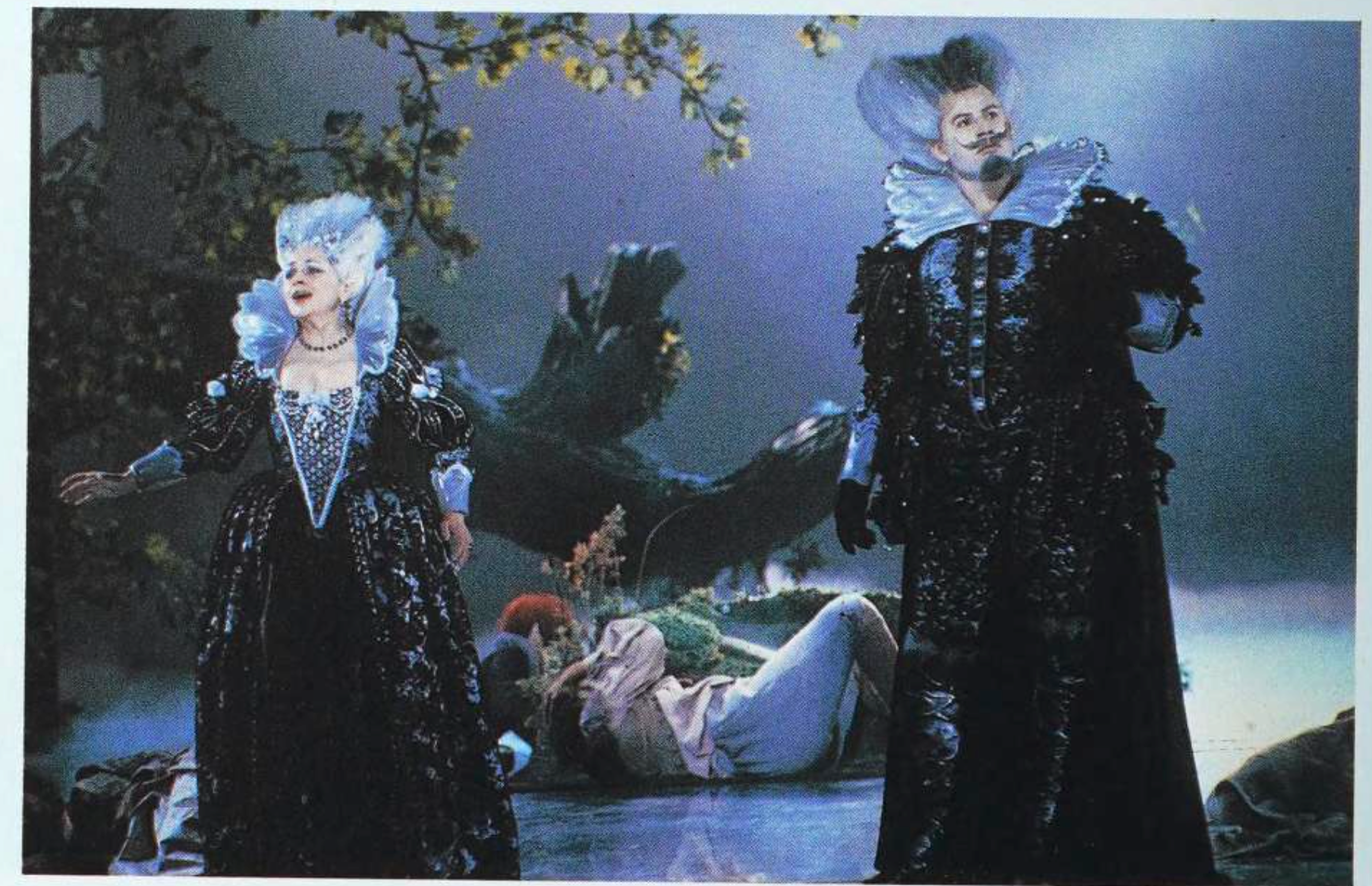
James Bowman, as Oberon with Tatiyana in the 1981 Production of A Midsummer Night’s Dream directed by Peter Hall at Glyndeborne.
Last Sunday the heavy wooden doors of Trinity St. Paul’s were opened to the public for a performance by the Historical Music Department at the University of Toronto.
Being a one time student of music history at UofT and a great fan of Baroque music I have developed a habit of attending student recitals, and on this night I was there.
It was a mild evening, and the full of winter has elapsed since the last show in November, which was Henry Purcell’s Dido & Aeneas.
As I made my way towards the stone clad church, the violet glowing exterior lights appeared to me a beacon of transformation from everyday landmark, to the luminous house of Tafel Musik.
Inside the atrium was already full with the buzz of the concert goers, some who waited with
eyes turned towards the program, discovering at last what treasures laid ahead tonight.
We had gathered to pay tribute to the English counter-tenor James Bowman a year since his passing. With frequent collaborator and Toronto’s own Daniel Taylor directing it was clear to me that the energy of the night was electrified by an immediate air of intimacy surrounding the man
There was something in the mummer of anticipation that the task at hand, a year in the making, was dedicated to paying respect for a triumphant life.
Bowman was probably best known for inspiring a renewed intrigue in the unique counter-tenor vocal range.
He was also beloved by the lgbqt+ and non-binary community for his advocacy throughout his life. Bowman famously played the first unisex Venus, Goddess of Love in the 1971 staging of William Boyce’s opera ‘The Secular Masque’’ following his 1967 casting as Oberon in Benjamin Britten’s staging of Midsommer Night’s Dream’ the same year in which Homosexuality was (partially) decriminalized in England.
In the middle of the twentieth century it was illegal to be gay in England, and Benjamin Britten defied by openly gay, partnering with Peter Pears from 1939 for 40 years onward, starting at a point in time when moral authorities were still threatening the livelihoods of those who were in violation of their law.
Bowman is also remembered for portraying Porporinio in an opera of the same name staged in 1979 after a 1974 novel with a cult following in the gay community – for its depiction of the relationship between castrati’s Feliciano and Porporino.
Ultimately Bowman’s breakout role as Oberon in Britten’s Midsummer’s Night for many signal’s the importance Britten had in opening doors for artists like Bowman, and for the many more would follow through them in the end.
This fact is not lost on the new generation that gather here tonight, as they mingle with their teacher’s, mentors, and aficionados alike. I can see it in the subtle glitter of glamour sprinkled amongst the lobby. A dazzling earring dangles from singer Ryan McDonald’s ear as they greet an audience member with a gigantic hug.
In the previous production of Dido & Aenas, Ryan’s fans had cheered in approval when they entered the stage as the very intimidating sorceress, in a stunning diva like moment of wind blowing through their flowing curls in allure that to me was reminiscent of Beyonce’s Egyptian-Pharaoh-esque Coachella moment against the backdrop of the vastness of desert night.
This kind of sorcery I think elicits mention in a full circle moment as we gather over Bowman’s legacy, as the original gender blending Goddess of Love, Venus.
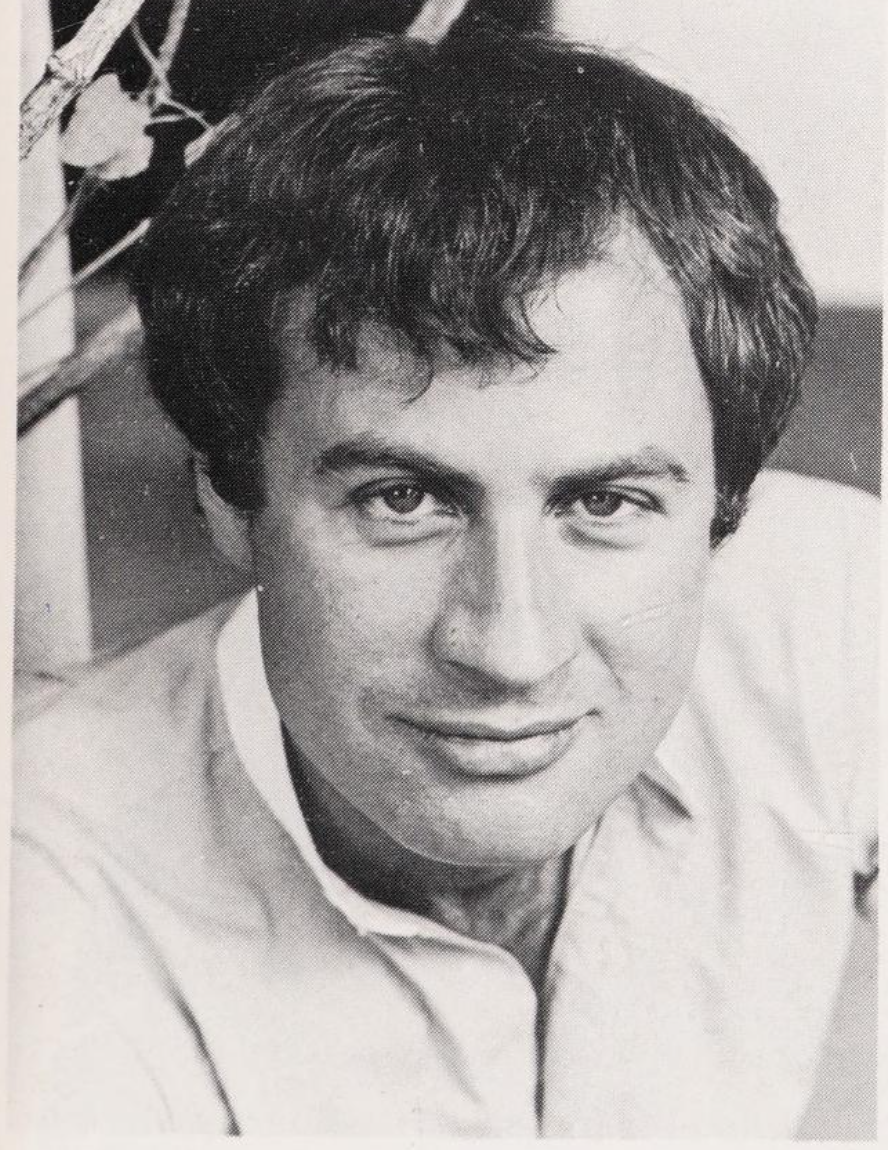
Once inside the theatre we waited as the musicians filled their seats. The stage soon became packed with a full suite of instruments, horns, oboe, strings to one side, a harpsichord, lute /guitarist, and cello stage-centre.
Along the entire width of the back row stood the chorus, with our female singers to one half of the stage and male to the other, it soon became immensely clear that the sound would fill the room tonight.
Amongst the beautiful backdrop of the familiar organ pipes hung a screen – which would be used to play footage of Bowman, and also from the church’s closets came a podium for the entwinement of meaningful stories, anecdotes, and praise in between several pieces, narrated from our star guests and soloists throughout the night.
As the lights began to fade, and the orchestra took the opening Sinfonia lead, I found myself no longer situated on a busy corner of Bloor Street in the twenty-first century, nor in the house of Toronto’s Tafel Musik, but transported back in time to a small and joyful, private baroque recital.
The heralding horns sang out in the happiest of glory, the piano plucked devotedly through every verse, and eventually, the voices joined in the song for the remaining 8 parts of our beloved Purcell’s Come ye Son’s of Art. But for that extended symphonic opening, I could have mistaken the mine en scene for that of the music’s contemporary. The stage was now set for the gaiety and love of music known in those old melodies from which sprang the world of the counter-tenor.
The powdered wigs and beauty marks were missing from the players, but in my mind the music was painting them in regardless.
Throughout the concert many more soloists stepped forward to joyfully compete for volume, complexity, pacing, and most of all our attention, at least this is what I imagine the inner workings of our singers must operate. Many of them succeeded in mirroring what Bowman demanded from the onslaught of his career to the very end, and that was to be heard.
First we heard a dainty and lovely entrance by Sarah Luedke singing Come Ye Sons of Art, followed by Alto’s Jordan Baldwin & Ivan Vutev to perform in a warm and lively manner the “Sound The Trumpet” duet which Bowman and Taylor have recorded together. I thought the alto’s had good charisma together, and worked well together.
The showcase included many talented voices, but a few stood out to me in particular. One has to make a special mention of Bass-Baritone Joel Allison, he was a true pallet cleanser, the slice of ginger you eat after your sushi so that the next roll is as delicious as the next. Savoury indeed was this spectacle. After one such solos, I felt there was something amusingly elevating in the female duet of Rhianna McDonald and Nathalie Winfield-Hicks that followed that I very much enjoyed.
At times I think I caught myself finding the event to be mouth watering indeed.
The voice of an angel emerged in soprano Sasha Koukarina who filled the room with her richly sombre sounds, and since my last time seeing the exceptional Jane Finglar in the Dido & Aeneas performance on this same stage, I noticed a growing wisdom in a flawless execution of a fluid rolling grace that remained perfectly entwined with the symphony, never giving way to any kind of slack. It was exceptionally done and I very much enjoyed hearing her sing of being a cat in pursuit of a mouse.
My attention was also often shifting from the beautiful authentic guitars and lutes, including an instrument called a Theorobo that always providing an additional fluttering of vital heart note’s by way of plucking strings, all performed by Jonathon Stuchbery.
The cutting tones of trumpets and strings of course dominated the symphony with a wonderful execution, however anyone who knows me knows my true love will always be the harpsichord. So I was so happy to see the piano playing long into the performance on this particular night, to which I think I should personally thank Jonathon Oldengarm for delightfully undertaking, until after an intermission the organ took its place.
The most illustrious stage presence of the night was of course Dame Emma Kirkby, a long time friend and collaborator of Bowman’s who graced us with her renditions of Purcell’s An Evening Hymn, and Music for Awhile, a piece which we are already familiar with here as followers of Taylor & Bowman from their 2007 joint album “Here Let My Life.” Her eternal beauty and wistful cadence folded in rippling little arcs that are meant to carry into the heavens reverberating off one another, where I imagine Bowman would have been catching their arcs like little fireflies on a summer’s night.
On that note, many of the performers evoked so much romanticism that I think Bowman would have been a little in love if he saw them himself. Or at least I like to imagine Bowman as a lover, as it takes a certain veracity to tell the Queen of England you would prefer when knighted asf Lady rather than Sir, as the kind of courage that I think only lovers are in possession of.
Matthew Black for example did his best impression of the operatic romanesque heartthrob you didn’t know you were missing until last Sunday. Performing twice, once in a duet during the ninth and final part go the opening Purcell pieces and again in the closing Rejoice The Lamb cantata by Britten, I imagine that one day, with a voice and face like his, he will be king, or at least perform some heraldic parts.
But he may have competition for some of our hearts just yet. A young siren by the name of Jacob Thomas deserves mention as one of the most animated of performers of Britten’s arrangement of Purcell’s Man is for Woman Made. At one moment mention of a shovel came with it a sort of digging motion that I felt he used as a lever to launch him self into our collective consciousness as a contender for all of our admiration.
A kindred spirit to our very own Ryan McDonald who we last saw in Dido & Aeneas playing the part of the Sorceress which had evoked the delightfully audible fanfare of the crowd, returned not just as a member of the chorus but as the duet partner of Daniel Taylor in the role once comprised of by Bowman himself in their 2005 recording of Through Your Strangeness from the Taylor’s Renaissance Song’s & Poetry album Love Bade Me Welcome.
I must confess that, having heard the recording before I was familiar with the lyrics and styling of the song, but it was on this night that I came to I realize just how beautiful the music was in person. There is something about an exceptional counter-tenor, or even better a dual of them, which a recording can never truly capture.
It is like listening the chimes of a crystal bell, that ringing and harmony is so angelic and touching that if you are not in the room in which the voices are singing you will never really get to experience the vibrations of the sound reaching directly through the echo chamber of the great hall back to you, reverberating through the fibres of your being, there is nothing in this case quiet like the real thing.
I can only describe the final piece of the evening, as electric. I said it before it was in the air, and then it was on the stage, and in every corner of the hall. The organ played, and the voices sprung to life in what only can be described as a neo-gregorian launching. The most contemporary comparison I can make is to Brian Eno’s Microsoft start-up sounds. Like coming to life softly sprang the richness of life, from the darkness of the empty void of nothing.
A mixing board could not have done a better job of fading into this celestial noise. I almost couldn’t differentiate the organ from the chorus as if the organ’s notes played from the singers’ mouths. That might be a silly image but I am being serious, the chorus had taken on the role of instruments, they became electric to me.
The piece was Rejoice in the Lamb, Opus 30. By Benjamin Britten. Being a modern work it was written for organ, but I cannot find any recordings that I could compare to what I heard that night. It was truly one of a kind and I think a great amount of praise should be showered upon our University’s innovation in the arrangement of this piece. Between the direction and Oldengarm’s control over the organ, and of course the chorus for their pitch perfect synchronization of harmony, I would bet that a better performance would be hard to find.
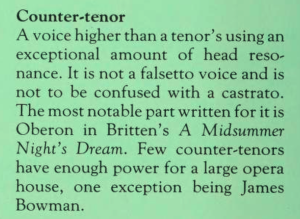
As I said before, and often has been printed on Bowman, he knew to be successful he had to be gigantic. He always aimed to fill the space with his voice in order to win people over and differentiate himself from someone who was simply fanciful.
He had been conscious and made many jokes in his life time about the role of counter-tenor, what it conjured, the associated history of the upper register of the male voice, and one way he could transcend the prejudice that came with it was to extend himself to the point of becoming like an instrument with it’s own distinct sounds and timbre, programable, malleable, and aware of it’s place in the over all composition.
To be mechanical without error would be a machine, but to be an instrument meant to be versatile enough to put down as you pick up. To tune in as you tune out. As the voices faded in and out of this final piece, I thought of life itself as an electric current. It can be turned on and shut off, and when Bowman’s life ended, the recordings he had left behind could be played to fill the space he has now left behind with his memory.
To hear this tribute itself was magnetic, drawing in all those form the city who knew him or wish to know him, and to search for what he would have hoped for as the memory of him.
As the song fades and the lights change, the applaud that followed still lingers behind where we left it, safely locked behind the heavy doors of Trinity-St. Paul’s.
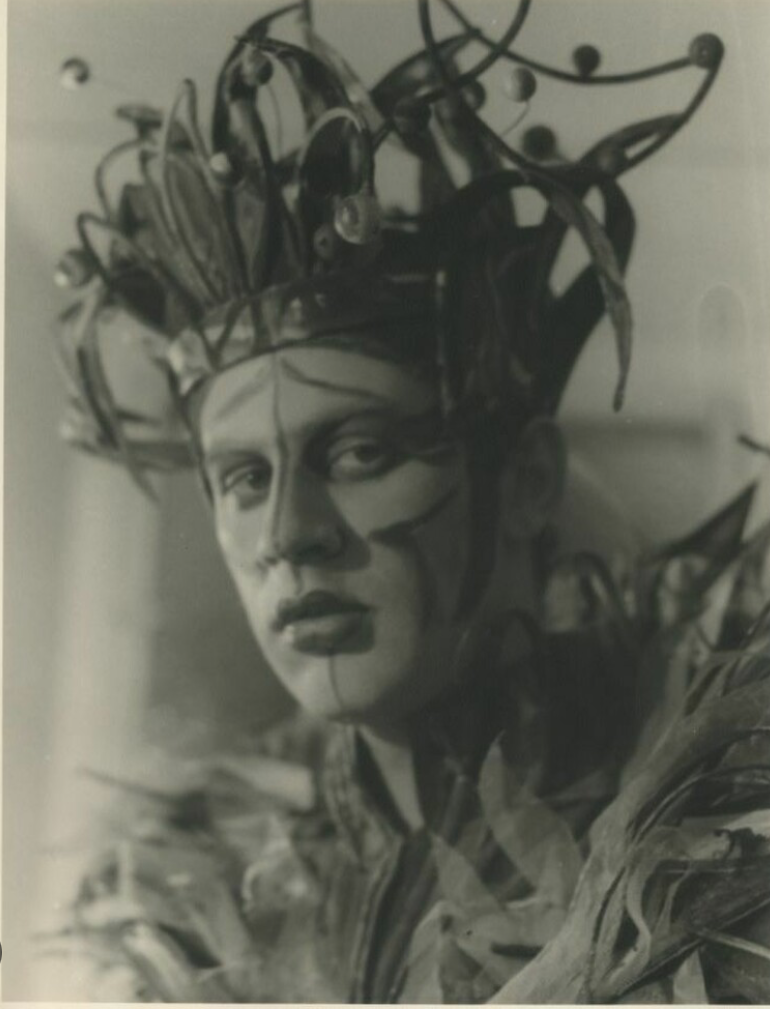
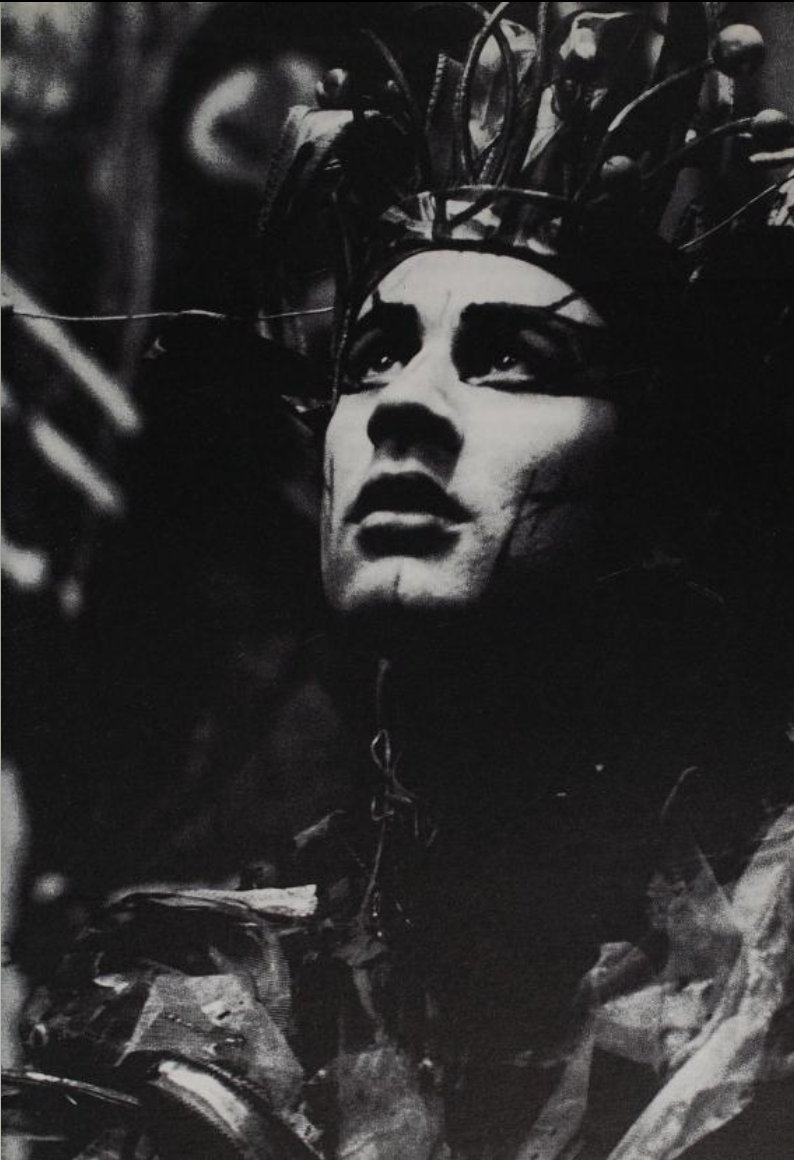

Shared by Christine Sherry






